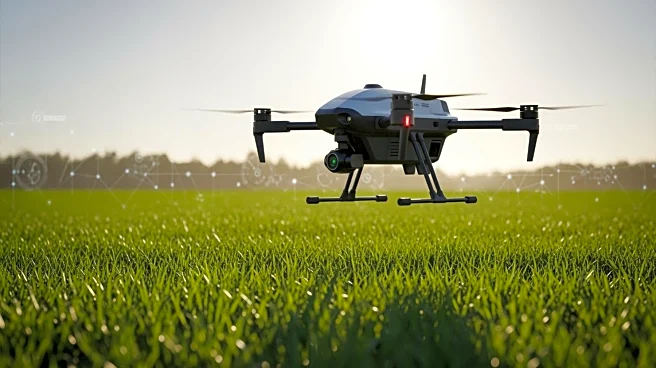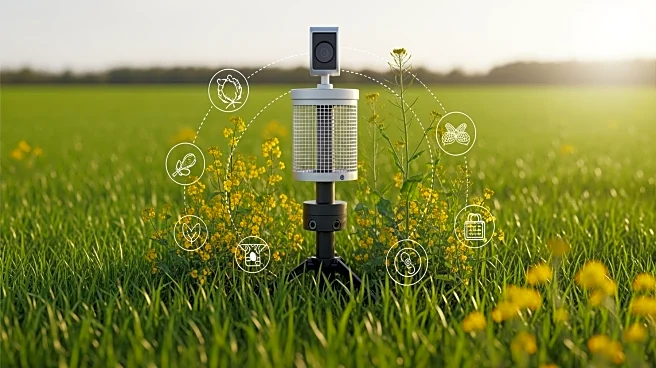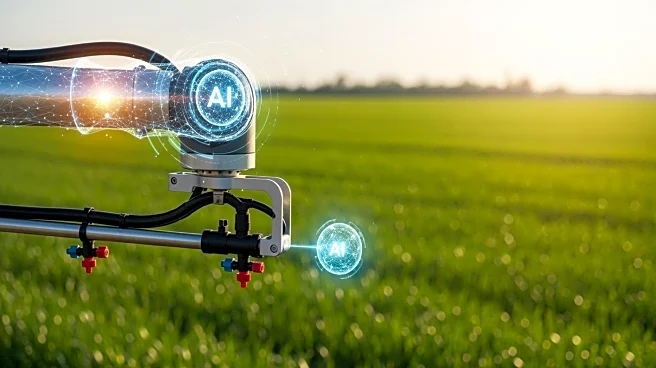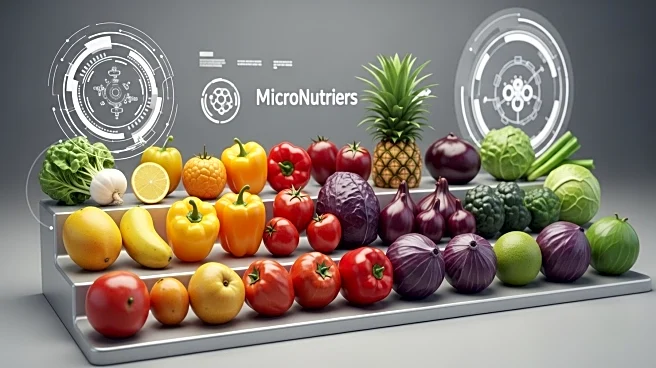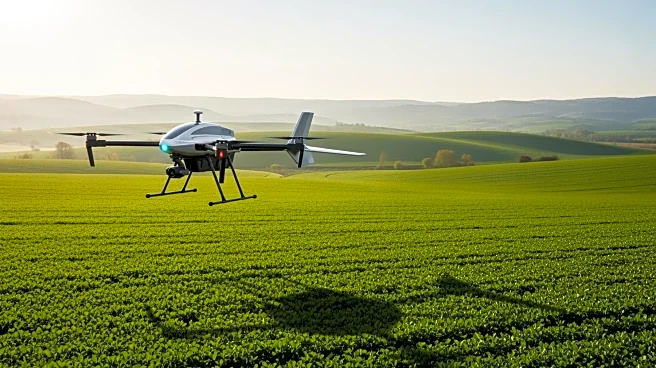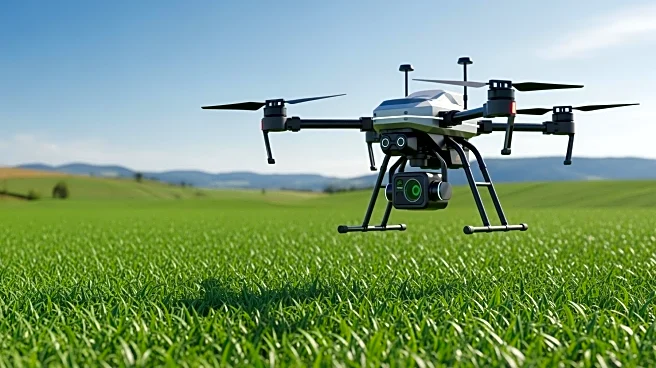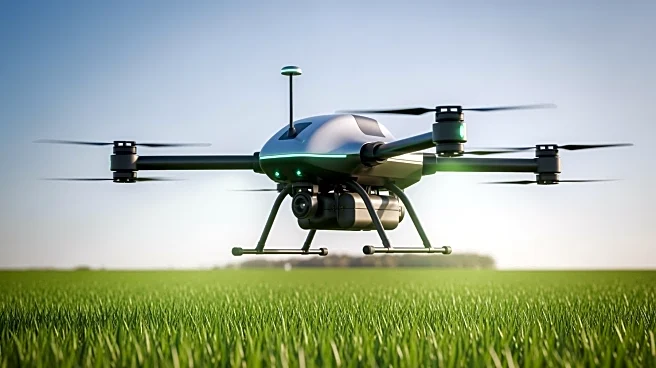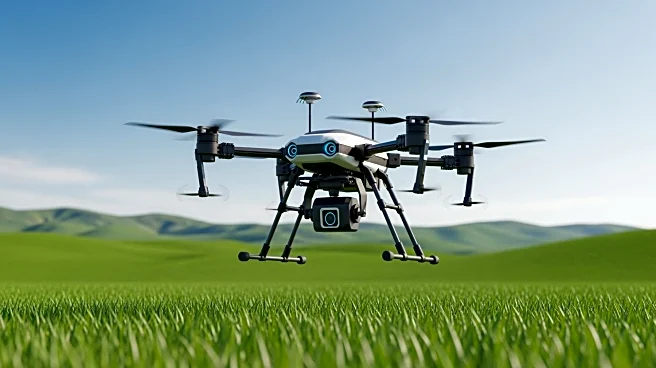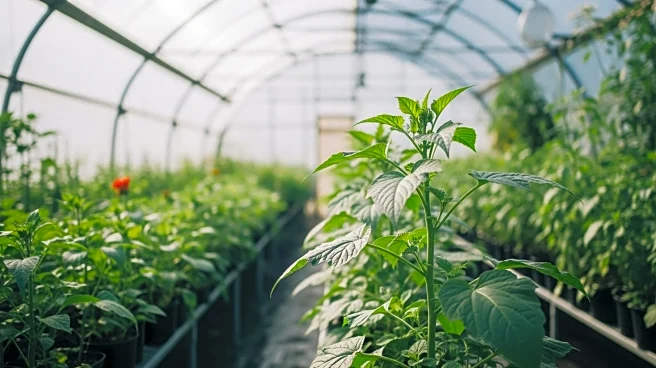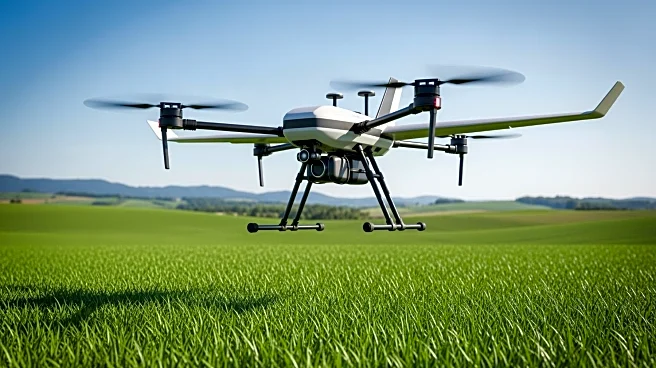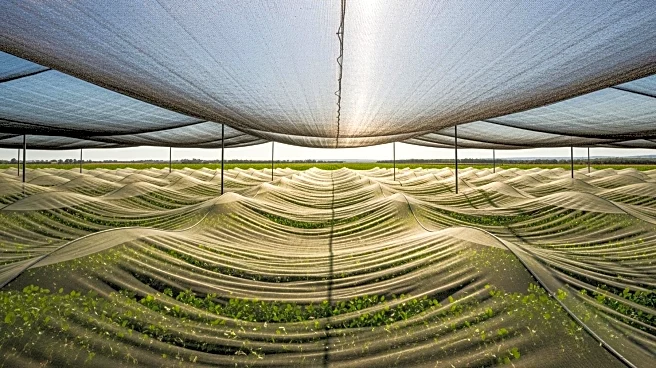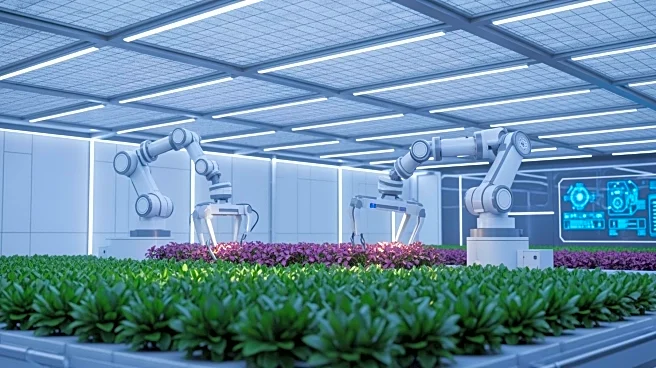What's Happening?
The agri-drones market is anticipated to grow significantly, reaching a valuation of $67.55 billion by 2035, according to a report by ResearchAndMarkets.com. This growth is driven by the increasing demand for climate-resilient agricultural decision support
systems and the integration of drone data into crop insurance and credit systems. The market is also benefiting from the expansion of UAVs in land use mapping and resource planning. Key trends include the adoption of precision agriculture, which optimizes inputs and enhances crop efficiency, and the rise of climate-smart farming practices. Automation is becoming more prevalent due to labor shortages, with autonomous drones reducing the need for manual labor. Innovations such as swarm technology and integration with IoT and big data systems are facilitating predictive analytics and informed decision-making.
Why It's Important?
The expansion of the agri-drones market is significant for several reasons. It represents a shift towards more sustainable and efficient farming practices, which are crucial in addressing environmental pressures and the need for precision in crop management. The integration of drones into agriculture is reshaping the delivery and utilization of farming inputs, machinery, and services, reducing dependency on heavy machinery and cutting fuel use, soil compaction, and chemical wastage. This shift is driving the crop protection and fertilizer industries to develop 'drone-ready' formulations, opening premium product lines in high-value horticulture. Additionally, the market is fostering cross-industry innovation, impacting sectors such as telecom, navigation, insurance, and financing, which are adapting with customized products and certification programs.
What's Next?
The future of the agri-drones market will likely see continued growth and innovation. As regulatory frameworks evolve, standardized airspace usage and certification protocols for drone operations are expected to be formalized. This will facilitate the broader adoption of drones in agriculture. The market is also poised to benefit from government subsidies, regulatory relaxations, and rising venture capital funding, which are fueling the entry of niche players. The competition among global OEMs, agriculture technology providers, and startups is expected to intensify, driven by advancements in AI-based analytics, swarm technology, and integration with IoT platforms. As drones transition from a niche precision tool to a mainstream component of modern agriculture, the sector will continue to innovate and expand.
Beyond the Headlines
The agri-drones market is not only transforming agriculture but also impacting related industries. The demand for drone-specific components is strengthening local manufacturing ecosystems and creating aftermarket opportunities. Data platforms and farm-management systems are integrating drone-captured insights, enhancing compliance, sustainability, and traceability reporting. The market is accelerating digital farming ecosystems at scale, reducing operational costs and driving input efficiency. Furthermore, the convergence of technology, sustainability, and data intelligence positions agri-drones as a cornerstone of next-generation farming, with implications for environmental policy and agricultural practices.
